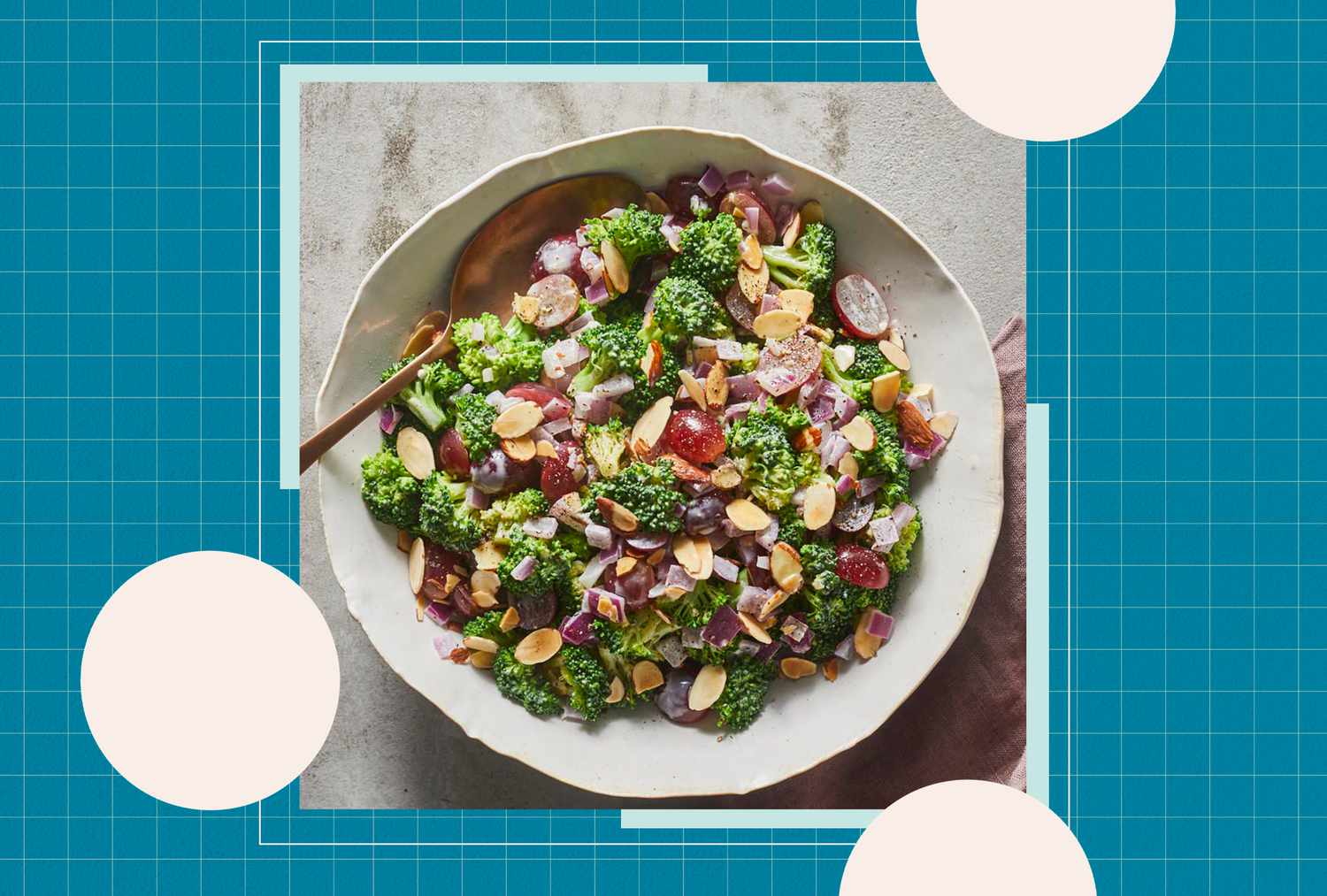Blood
The #1 Vegetable for Lowering Blood Sugar, Recommended by a Dietitian
You may have heard the phrase make sure to eat all of your broccoli (or said it yourself!) more than a few times. There’s still some truth to this childhood advice.
Why? Broccoli has long been known for its slew of impressive health benefits, from its cancer-protective properties to its nutrients that may support heart and brain health. The cruciferous vegetable is also packed with essential nutrients like vitamins A, C, K, folate, fiber and potassium, all of which your body needs to function well.
Related: The 10 Best Vegetables for Diabetes
Still, this nonstarchy cruciferous vegetable has many more benefits to offer, particularly around lowering blood sugar levels. If you have prediabetes or diabetes, keep reading to discover why broccoli is our top veggie choice for helping with blood sugar management.
Jennifer Causey
Blood Sugar Management Benefits of Broccoli
Offers Fiber
As a nonstarchy veggie, broccoli is one of the top contenders to include in balanced meals and snacks. It contains fewer than 6 grams of carbohydrates per 1-cup raw serving, according to the USDA, and about 2 grams of fiber. The combination of being low in carbs and offering fiber, which slows digestion, means that eating broccoli will have a very minimal effect on your blood sugar levels.
Plus, eating broccoli and other fiber-rich foods promotes fullness and regularity. The American Diabetes Association recommends people with prediabetes and diabetes follow the Diabetes Plate Method by filling up half your plate with nonstarchy vegetables—broccoli being one of them.
Contains Sulforaphane
Emerging research suggests that broccoli may contribute to lower blood sugar levels when eaten regularly over the long term. Sulforaphane, a sulfur-containing compound present in cruciferous vegetables that gives them their distinctive aroma and bitterness, could play a role in helping to manage high blood sugar and insulin resistance, as well as decreasing oxidative stress, which is damaging to blood vessels and is responsible for some of the heart complications of diabetes, according to a 2023 review in Phytomedicine Plus.
Helps You Hydrate
Eating broccoli is another way for people with elevated blood sugars to stay hydrated, says Angelina Bañuelos-Gonzalez, M.S., RDN, a certified diabetes care and education specialist at Nudj Health. Being dehydrated concentrates your blood sugar, causing a rise in blood glucose levels, according to the Centers for Disease Control and Prevention. When your blood sugar rises, you’re also at risk for dehydration, she points out, as high blood sugar makes you urinate more. Broccoli is 90% water, per the USDA, so eating fresh fruits and veggies like broccoli can also help keep you hydrated.
Is Affordable
You can find a single fresh broccoli crown for under $1.50 and 2 pounds of frozen broccoli for $3 at Walmart. If you buy it fresh, it lasts about three to five days in the fridge, according to the USDA’s FoodKeeper App. Point is, you get a lot of nutrient bang for your buck when you buy broccoli, and you can purchase it at the beginning of the week and use it up throughout. Also, don’t shy away from frozen broccoli. Once it’s picked, it’s flash-frozen, preserving all of the veggie’s vitamins and minerals. Look for plain frozen broccoli florets to get creative in the kitchen with your own recipes, or try one of our 20 Broccoli Recipes You’ll Want to Make Forever.
Is Versatile
What’s great about broccoli is that you can cook the crucifer in many ways—enjoy the florets raw, steamed or sautéed, and add them to soups, stews, salads, casseroles and more. Bañuelos-Gonzalez loves enjoying the veggie roasted, as roasting brings out the crucifer’s sweetness.
Craving more ideas? Honestly, the sky’s the limit when it comes to broccoli. “Pair [the veggie] with salmon and brown rice. At breakfast, chop broccoli into small pieces and use in scrambled eggs or an omelet paired with a fruit,” suggests Jocelyne Loran, RD, CDCES, a registered dietitian and certified diabetes care and education specialist at the University of Maryland’s Charles Regional Medical Center.
If you are looking for a nutritious and satisfying snack, combine your favorite plain Greek yogurt with dried herbs like chives, dill, parsley and garlic and onion powder for a homemade (and higher-protein) ranch dip, or opt for our Light & Airy Whipped Cottage Cheese. Then, dunk some broccoli florets. The stalk is also edible—grate it to prepare a Creamy Broccoli Slaw as a delicious side.
Two Important Considerations When You Start Eating More Broccoli
If you don’t eat broccoli regularly, you may experience gas and bloating in the beginning, according to Bañuelos-Gonzalez. For easier digestion, she recommends cooking the broccoli to start and adding raw broccoli to the diet slowly once you can tolerate it.
Keep in mind, too, that broccoli is rich in vitamin K, a vitamin that promotes blood clotting in the body. If you take a blood thinner like warfarin (Coumadin), the vitamin can interfere with how the medication works. Loran recommends keeping a tab on your intake of vitamin K-rich foods while taking these medications. Both Bañuelos-Gonzalez and Loran suggest speaking with a registered dietitian or your primary care provider to determine if and how much broccoli and other vitamin K-rich foods you could incorporate into your meals if you’re taking a blood-thinner medication.
Bottom Line
Broccoli is an excellent nonstarchy vegetable option to include as part of a balanced and nutritious meal pattern that may help with blood sugar management. The vegetable could also help keep you feeling fuller longer and give you steady energy. Discover how to incorporate broccoli into your diet by browsing our Meal Plans for Diabetes and Healthy Broccoli Recipes.

